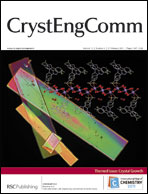Fifteen cocrystals, four cocrystal polymorphs, one cocrystal hydrate, two free base solvates and one free base hydrate of N-(4-(6-(4-(trifluoromethyl)phenyl)pyrimidin-4-yloxy)benzo[d]thiazol-2-yl)acetamide (FB) were successfully prepared by milling, solution or slurry crystallization techniques. Thirteen new crystal structures are reported. Powders were characterized by X-ray powder diffraction, thermal gravimetric analysis and differential scanning calorimetry where available. Analysis of the hydrogen bonding within the cocrystals revealed a common heterosynthon among most of the carboxylic acid cocrystals, which may be useful in future cocrystal design. Two main conformational types were observed in the crystal structures, the free base/cocrystal type and the solvate type. Calculation of the relative energies showed that there was significant overlap between both conformational types indicating that the conformational energies of either class could be easily accommodated in a crystal lattice.
![Graphical abstract: Preparation, solid state characterization, and single crystal structure analysis of N-(4-(6-(4-(trifluoromethyl)phenyl)pyrimidin-4-yloxy)benzo[d]thiazol-2-yl)acetamide crystal forms](/en/Image/Get?imageInfo.ImageType=GA&imageInfo.ImageIdentifier.ManuscriptID=C0CE00544D&imageInfo.ImageIdentifier.Year=2011)
You have access to this article
 Please wait while we load your content...
Something went wrong. Try again?
Please wait while we load your content...
Something went wrong. Try again?
![Graphical abstract: Preparation, solid state characterization, and single crystal structure analysis of N-(4-(6-(4-(trifluoromethyl)phenyl)pyrimidin-4-yloxy)benzo[d]thiazol-2-yl)acetamide crystal forms](/en/Image/Get?imageInfo.ImageType=GA&imageInfo.ImageIdentifier.ManuscriptID=C0CE00544D&imageInfo.ImageIdentifier.Year=2011)

 Please wait while we load your content...
Please wait while we load your content...